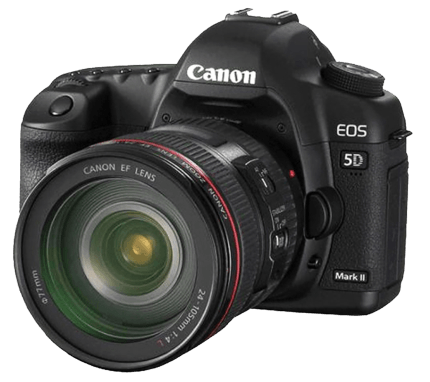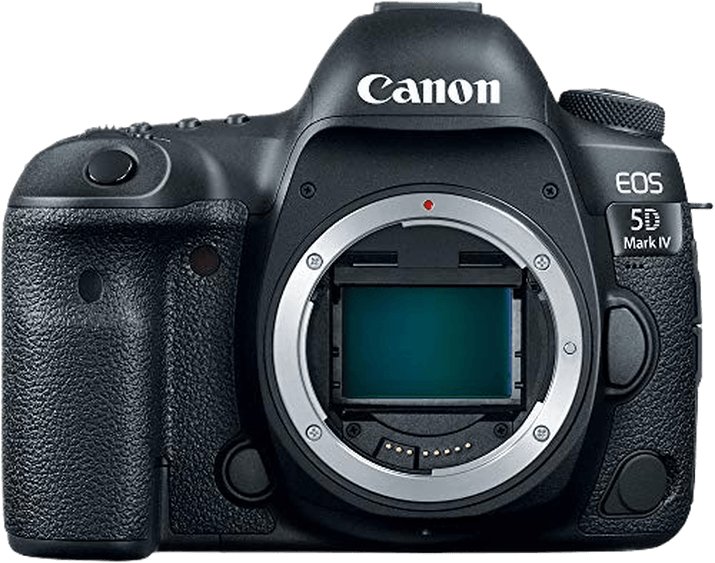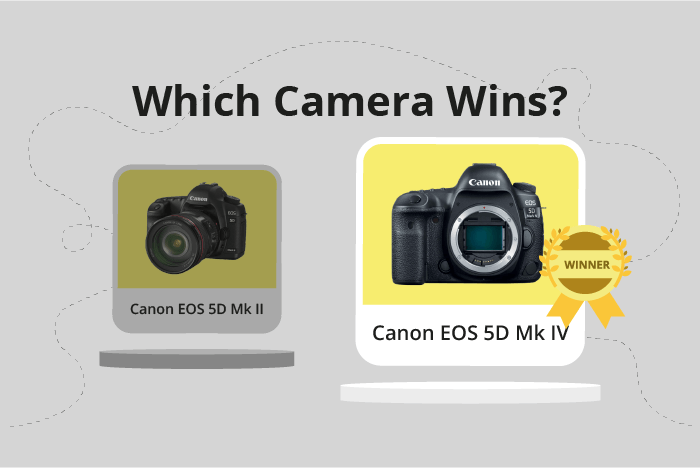Canon EOS 5D Mark II vs EOS 5D Mark IV Comparison
Canon EOS 5D Mark II

Canon EOS 5D Mark IV

The Canon EOS 5D Mark IV outperforms its predecessor, the Canon EOS 5D Mark II, with a score of 75/100 compared to 58/100. Both cameras are DSLR models, and they share similar dimensions, with the Mark IV being slightly larger and heavier. The Mark II was released in 2008 with a launch price of $2,199, while the Mark IV was released in 2016 with a price of $3,500.
The Mark IV’s higher score indicates its superiority in terms of features and performance. It offers a more advanced autofocus system, improved image quality, and faster continuous shooting. On the other hand, the Mark II’s lower score doesn’t necessarily mean it’s a bad camera. In fact, it still delivers excellent image quality and is a more affordable option for those on a budget.
Considering the differences in specifications and release dates, it’s clear that the Canon EOS 5D Mark IV is a better camera overall, but the Mark II remains a solid choice for those seeking a more budget-friendly option.
Canon EOS 5D Mark II vs EOS 5D Mark IV Overview and Optics
The Canon EOS 5D Mark IV outperforms the Canon EOS 5D Mark II in optics, scoring 76/100 compared to the Mark II’s 59/100. Both cameras share some common specifications, including the CMOS sensor type, full-frame sensor size, Canon EF lens mount, and the lack of image stabilization.
The 5D Mark IV’s superiority in optics is evident in its higher megapixel count of 30.4, compared to the Mark II’s 21 megapixels. This increase in resolution enables the Mark IV to capture more detail and produce higher quality images. Additionally, the Mark IV has a faster shooting speed of 7 frames per second, compared to the Mark II’s 3.9 frames per second. This allows the Mark IV to capture fast-moving subjects more effectively. The Mark IV also boasts a superior processor, the Digic 6+, which enhances image processing and overall performance. Lastly, the Mark IV’s DXOMARK sensor score of 91 indicates a better sensor performance than the Mark II’s score of 79.
Although the 5D Mark II falls short in several aspects, it still offers a reliable full-frame sensor and a compatible Canon EF lens mount, allowing users to utilize a wide range of high-quality lenses. While its shooting speed and sensor performance are not as impressive as the Mark IV’s, the Mark II remains a solid choice for photographers who prioritize affordability over the latest features.
Considering the differences in optics, the Canon EOS 5D Mark IV is the clear winner, providing better image quality, faster shooting speed, and an improved processor. However, the Canon EOS 5D Mark II remains a viable option for those seeking a more budget-friendly full-frame camera with access to Canon’s extensive lens lineup.
Canon EOS 5D Mark II vs EOS 5D Mark IV Video Performance
The Canon EOS 5D Mark IV outperforms the Canon EOS 5D Mark II in video capabilities, as evidenced by its significantly higher video score of 91/100 compared to the Mark II’s score of 43/100. Both cameras share Full HD video resolution and a maximum video dimension of 1920 x 1080. However, the Mark IV excels with additional features and specifications that make it a superior choice for video recording.
The Mark IV’s video quality is superior due to its 4K video resolution, which is a notable improvement from the Mark II’s Full HD resolution. Additionally, the Mark IV boasts a maximum video dimension of 4096 x 2160, which allows for larger and more detailed video footage. The Mark IV also offers a higher maximum video frame rate of 120fps, compared to the Mark II’s 30fps. This enables the Mark IV to capture smoother and more professional-looking footage, especially during fast-paced action scenes.
The Mark IV also has a built-in time-lapse functionality, which the Mark II lacks. This feature allows users to create stunning time-lapse videos without requiring any additional equipment or software.
The Mark II does not have any significant advantages in video capabilities over the Mark IV. The only shared specifications between the two cameras are Full HD resolution and 1920 x 1080 video dimensions, which are both surpassed by the Mark IV’s superior features.
Considering the significant differences in video capabilities, the Canon EOS 5D Mark IV is the clear winner in this comparison. Its higher video score, 4K resolution, larger video dimensions, faster frame rate, and built-in time-lapse functionality make it a more versatile and powerful choice for video recording. The Mark II, while still capable of producing quality Full HD footage, falls short in comparison to the Mark IV’s advanced video capabilities.
Canon EOS 5D Mark II vs EOS 5D Mark IV Features and Benefits
The Canon EOS 5D Mark IV outperforms the Canon EOS 5D Mark II with a feature score of 74/100 compared to the Mark II’s 54/100. Both cameras share some specifications, such as a 3-inch screen size, no flip screen, WIFI connectivity, and no Bluetooth capabilities.
The Mark IV stands out with its higher screen resolution of 1,620,000 dots compared to the Mark II’s 920,000 dots. This difference provides the Mark IV with a clearer and more detailed display. Additionally, the Mark IV has a touchscreen, which the Mark II lacks. This feature allows for easier navigation and quicker adjustments. The Mark IV also includes GPS, enabling users to geotag their images with location data, a feature absent in the Mark II.
On the other hand, the Mark II does not offer any significant advantages over the Mark IV in terms of features. Both cameras have the same screen size and lack a flip screen and Bluetooth capabilities. The only advantage the Mark II holds is its lower price point, making it a more budget-friendly option.
Considering the specifications and features, the Canon EOS 5D Mark IV is the better camera of the two. Its higher feature score is a result of its superior screen resolution, touchscreen, and GPS capabilities. While the Mark II may be a more affordable option, the Mark IV offers a more advanced and convenient user experience.
Canon EOS 5D Mark II vs EOS 5D Mark IV Storage and Battery
The Canon EOS 5D Mark IV prevails over the Canon EOS 5D Mark II in the storage and battery category, both scoring 71/100. Both cameras share common specifications, including two memory card slots and the absence of USB charging. The 5D Mark IV accepts SD/SDHC/SDXC (UHS-I compatible) and Compact Flash memory cards, while the 5D Mark II accepts Compact Flash (Type I or II), UDMA, and Microdrive cards.
The 5D Mark IV offers a slightly better battery life with 900 shots, compared to the 5D Mark II’s 850 shots. Additionally, the 5D Mark IV uses the LP-E6N battery type, while the 5D Mark II uses the LP-E6 battery. There is no specific advantage for the 5D Mark II in this comparison.
Considering these points, the Canon EOS 5D Mark IV proves to be superior in terms of storage and battery life, making it a better choice for photographers who value these features.
Canon EOS 5D Mark II vs EOS 5D Mark IV – Our Verdict
Are you still undecided about which camera is right for you? Have a look at these popular comparisons that feature the Canon EOS 5D Mark II or the Canon EOS 5D Mark IV:

